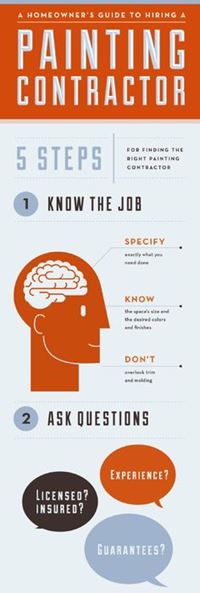Crucial Seasonal Aspects Of Commercial Outside Paint: What You Must Understand
Crucial Seasonal Aspects Of Commercial Outside Paint: What You Must Understand
Blog Article
Published By-Fox Rodriquez
When you're preparing a commercial outside paint project, seasonal factors can make or damage your results. You'll want to take into consideration exactly how temperature level and moisture influence paint application and drying out times. Selecting the right season can ensure your paint sticks effectively and lasts longer. But which seasons are really the very best for this sort of work? Allow's discover the key elements that can influence your project's success.
The Influence of Temperature Level on Paint Application
When you're planning a commercial outside paint task, the temperature can significantly affect how well the paint sticks and dries.
Ideally, you want to repaint when temperature levels range in between 50 ° F and 85 ° F. If it's too cold, the paint may not heal appropriately, resulting in problems like peeling off or cracking.
On the flip side, if it's as well warm, the paint can dry too quickly, stopping correct adhesion and causing an unequal surface.
You should additionally take into consideration the time of day; morning or late afternoon provides cooler temperature levels, which can be much more favorable.
Constantly examine the supplier's suggestions for the certain paint you're making use of, as they commonly give support on the perfect temperature variety for optimum outcomes.
Moisture and Its Effect on Drying Times
Temperature level isn't the only environmental element that influences your business outside painting task; humidity plays a significant duty also. High moisture levels can reduce drying out times considerably, influencing the overall top quality of your paint job.
When the air is saturated with moisture, the paint takes longer to treat, which can cause concerns like inadequate attachment and a greater risk of mildew development. If you're repainting on an especially damp day, be planned for prolonged wait times between coats.
It's critical to check neighborhood weather and plan accordingly. Preferably, aim for moisture levels in between 40% and 70% for optimal drying out.
Keeping click the up coming website page consider mind ensures your task remains on track and supplies a long lasting finish.
Best Seasons for Commercial Exterior Painting Projects
What's the best time of year for your business outside painting projects?
click the up coming web page and early loss are usually your best bets. Throughout these periods, temperatures are light, and humidity degrees are commonly reduced, producing suitable conditions for paint application and drying.
Stay clear of summertime's intense heat, which can cause paint to completely dry too quickly, leading to bad adhesion and finish. In a similar way, winter's chilly temperature levels can hinder correct drying out and healing, running the risk of the longevity of your paint work.
Aim for days with temperatures between 50 ° F and 85 ° F for optimal results. Keep in mind to check the neighborhood weather prediction for rainfall, as wet conditions can wreck your project.
Planning around these elements ensures your paint job runs efficiently and lasts longer.
Final thought
Finally, planning your business exterior painting projects around seasonal factors to consider can make a significant distinction in the end result. By scheduling job during the optimal temperatures and humidity degrees, you'll guarantee far better adhesion and drying times. Remember to keep an eye on neighborhood weather report and choose the right time of year-- springtime and very early autumn are your best choices. Taking these steps will assist you accomplish a durable and professional coating that lasts.
